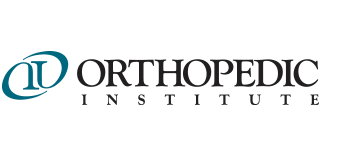Senior Health: When Injuries Are Serious Enough for an Orthopedic Visit
Injuries can be difficult to evaluate if you’re not a trained professional. Especially if symptoms don’t start to act up until well after the injury occurred. So how can you tell if your injury needs to be examined by an orthopedic specialist?
Here are some signs for seniors to watch for after an injury.
Foot or Ankle Injuries
Did you twist your ankle stepping off a curb or drop a heavy box on your foot? If you notice swelling that doesn’t go away or pain when you place weight on the injured limb, you might require a visit to our clinic or to a foot specialist on the Orthopedic Institute (OI) team, such as Dr. Watson.
You definitely need to get checked out upon difficulty walking or if you can’t manage to move more than a few feet.
OI actually offers walk-in hours for immediate check-ups, weekdays from 3-7 p.m., and Saturday from 11 a.m.-4 p.m. You can also make an appointment online here.
Ligament Injuries
Consistent pain isn’t the only indicator for a visit to the orthopedist. A torn ACL doesn’t always result in pain but certainly warrants a clinic trip. If your knees feel strange turning corners or they feel unstable, these are signs you need to see a health professional. Torn cartilage and ligaments can also cause problems by causing joints to stick or outright lock up.
Just like for foot or ankle injuries, OI can check out the effects of a ligament injury during walk-in hours, weekdays from 3-7 p.m., and Saturday from 11 a.m.-4 p.m., or by setting up an appointment online here.
Muscle Injuries
Muscle pulls, also known as strains, are common. It’s also common, when lifting weights, to experience some minor soreness that dissipates within a day or two. However, severe tears can require surgery to piece the muscle tissue back together. A strain of this nature can sometimes be associated with a weakness sensation or inability to use the associated muscle or tendons.
Our specialists at OI can complete a series of orthopedic tests on areas of pain in order to pinpoint any possible tears. If more information is needed, an MRI can diagnose the tear’s severity.
Wear and Tear
Over time, areas such as the knees, ankles, shoulders and other parts that see a lot of use, can start to act up. Inflammation in joints can get worse, causing pain and stiffness. When arthritis sets in, it can cause many daily activities to become painful chores. Consistent joint swelling, tenderness and restricted range of movement can be signs of arthritis. Check out our blog on alternative therapies for more on possible treatments.
Time for a Visit
If you’re experiencing any of the above symptoms and have a concern, it’s never a bad idea to get checked out by an orthopedic specialist. Your health is important to the team here at OI. We can set you up with the right treatment plan to help you recover and once again get your body back in motion.












 What do Alex Morgan, Megan Rapinoe, Brandi Chastain, Ali Krieger, Heather Mitts and Molly Doetzel have in common? They are all talented women soccer players who tore an ACL. And all, except Molly, played for the U.S. National Team.
What do Alex Morgan, Megan Rapinoe, Brandi Chastain, Ali Krieger, Heather Mitts and Molly Doetzel have in common? They are all talented women soccer players who tore an ACL. And all, except Molly, played for the U.S. National Team. And so it was with Molly. “Dr. Looby repaired my ACL and helped me quickly regain strength and flexibility,” Molly said. “Everyone told me—and from my own experience—that Dr. Looby is the best of the best.” Something she echoes regarding her experience at Orthopedic Institute, particularly the rehabilitation process, which was led by Brad Pfeifle, VP of Sports Medicine & Rehab Services. According to her coach, Ryan Beier, “We didn’t know if she would be able to come back this season as strong as she had been in the past. She was able to play at full strength, if not even better than before and she didn’t need to wear a brace because of the hard work she did in therapy at Orthopedic Institute and with Brad.”
And so it was with Molly. “Dr. Looby repaired my ACL and helped me quickly regain strength and flexibility,” Molly said. “Everyone told me—and from my own experience—that Dr. Looby is the best of the best.” Something she echoes regarding her experience at Orthopedic Institute, particularly the rehabilitation process, which was led by Brad Pfeifle, VP of Sports Medicine & Rehab Services. According to her coach, Ryan Beier, “We didn’t know if she would be able to come back this season as strong as she had been in the past. She was able to play at full strength, if not even better than before and she didn’t need to wear a brace because of the hard work she did in therapy at Orthopedic Institute and with Brad.” By any measure, Dee Larson and her husband Dale lived a pretty good life. Dee was an executive assistant. Dale was a pharmacist. With two grown children, doing very nicely in distant cities, Dee and Dale regularly played golf together. When they weren’t golfing or socializing, they traveled to warm and sunny places on land and enjoyed the occasional cruise.
By any measure, Dee Larson and her husband Dale lived a pretty good life. Dee was an executive assistant. Dale was a pharmacist. With two grown children, doing very nicely in distant cities, Dee and Dale regularly played golf together. When they weren’t golfing or socializing, they traveled to warm and sunny places on land and enjoyed the occasional cruise.